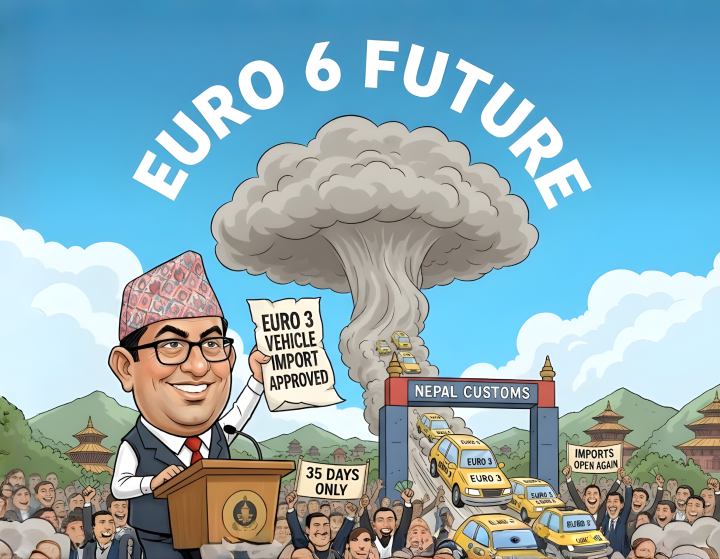
Nepal allows import of Euro 3 standard vehicles for a limited 35-day period
The temporary decision gives importers and manufacturers more time to adjust to new Euro 5 and Euro 6 emission standards
Vehicle imports and assembly under Euro 3 rules are permitted until 15 Mangsir 2082 (December 1, 2025)
Policy aims to balance environmental goals with practical trade realities
The Ministry of Finance, led by Finance Minister Rameshwor Khanal, has reopened the door for importing Euro 3 standard vehicles into Nepal. This short-term policy change, published in the Nepal Gazette, gives importers a 35-day window to bring in vehicles that meet the older Euro 3 standard.
The decision provides breathing room for auto importers and assemblers struggling to adapt to the new emission standards introduced under the Nepal Vehicle Emission Standards 2082 (2025).
The new gazette notice allows vehicles with proforma invoices issued before the enforcement of the new law to be imported until 15 Mangsir 2082. It also applies to vehicles assembled or produced in Nepal using Euro 3-compliant parts.
In practical terms, this means importers and local manufacturers can complete pending shipments or finish assembly operations without facing penalties under the updated emission standards.
The Ministry of Forests and Environment will monitor these imports and ensure they comply with the set timeframe.
Nepal officially implemented the Vehicle Emission Standards 2082 on 9 Ashadh 2082 (June 23, 2025). The regulation upgraded national requirements to match international standards. Under the new rule:
Four-wheel vehicles must meet Euro 6 standards
Two-wheel vehicles must meet Euro 5 standards
These updates were part of a larger move to reduce pollution and improve public health through cleaner vehicle technology. However, importers and manufacturers requested more time to adapt to the new compliance costs and supply chain changes.
This short extension brings temporary relief for businesses in the auto sector.
Dealers can clear backlogged orders and manage inventory that was already in transit or financially committed under the older rules.
Manufacturers assembling vehicles in Nepal can continue production using Euro 3-compliant parts without immediate disruptions.
The brief resumption of Euro 3 imports is also expected to generate customs revenue and prevent potential vehicle shortages in the market.
While the temporary relaxation helps businesses, it raises short-term concerns for air quality and emissions control. Euro 3 vehicles emit more pollutants than Euro 5 and Euro 6 models.
However, the limited timeframe and the December 1, 2025 cutoff mean the impact on long-term environmental goals is expected to remain low. The policy’s design ensures that Nepal still stays on track for cleaner vehicle adoption.
The decision reflects a practical approach to enforcing environmental policies while protecting economic stability. Businesses now have a clear deadline to:
Shift procurement and production to Euro 5 and Euro 6 standards
Upgrade supply chains and technical capabilities
Prepare for full compliance after 15 Mangsir 2082
After this period, the government is expected to strictly enforce the updated emission standards, moving the country fully into the cleaner-vehicle era.
Nepal’s short-term reopening for Euro 3 vehicle imports is a measured policy adjustment, not a rollback. It gives importers and manufacturers space to align with new environmental goals without causing immediate market disruption.
By the end of 15 Mangsir 2082 (December 1, 2025), Nepal aims to fully transition to Euro 5 and Euro 6 standards, striking the right balance between economic flexibility and environmental responsibility.